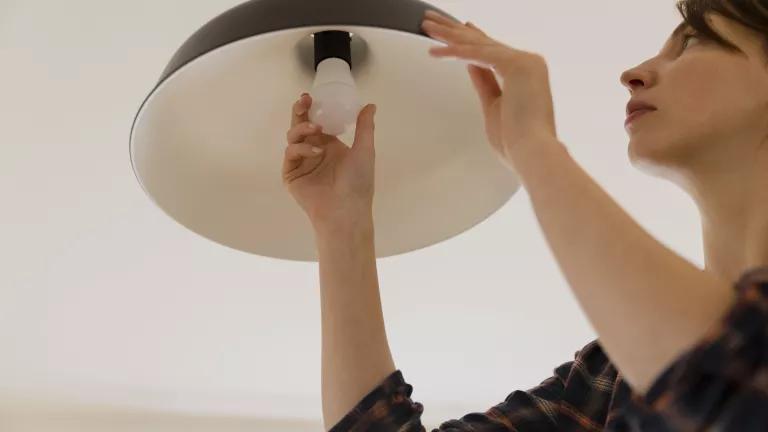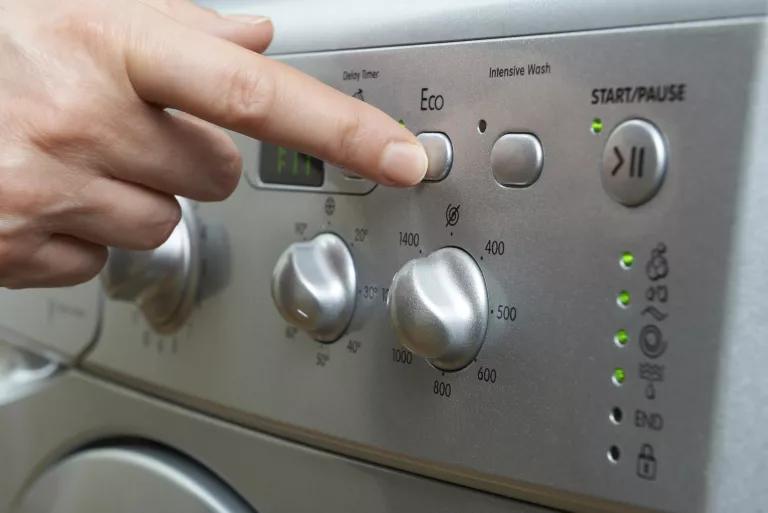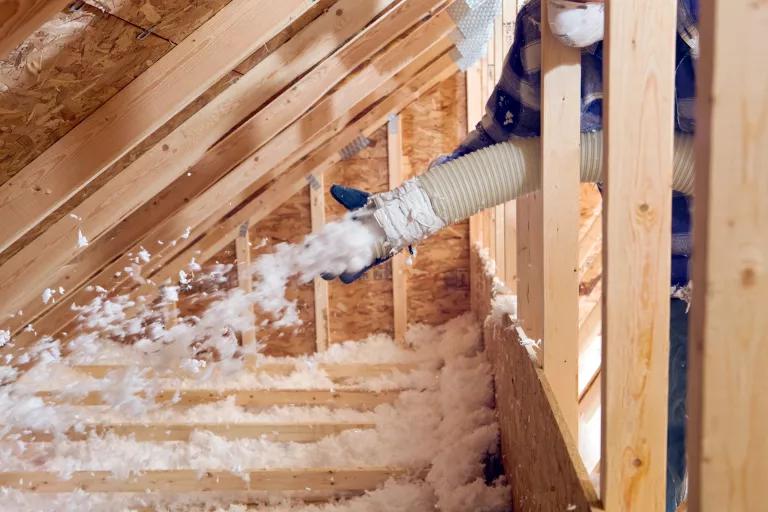Energy Efficiency: The Clean Facts
Here’s what you need to know about energy efficiency and how you can help save the environment—and money—at the same time.

iStock
Jump to Section
Is contributing to the fight against climate change actually as easy as changing a light bulb? Granted, stemming the tide of global warming and rising sea levels is obviously more complicated than swapping in energy-saving LED bulbs. But energy efficiency is indeed an important—and often underappreciated—tool to reduce pollution and waste. After all, energy efficiency is America's largest energy resource, having done more to meet the nation’s energy needs than oil, gas, and nuclear power over the past four decades.
What Is Energy Efficiency?
Energy efficiency harnesses technology to help avoid or reduce energy waste so that you can still turn on the lights, drive, or wash your clothes but use less energy doing so. (Similarly, energy conservation is also about smarter energy use but it relies on people cutting back on activities that consume energy, like turning off lights, driving less, or using appliances less often.)
Why Is It Important to Use Less Energy?
Using less energy is good for your wallet (more on that in the energy-saving tips below) and the broader economy. Thanks to efficiency measures, U.S. energy use is about the same now as it was more than 20 years ago, even as the economy has steadily grown. Greater efficiency can also relieve stress on the power grid and infrastructure.
By reducing the amount of energy required for certain tasks, energy efficiency is also good for the planet. It can help to reduce air and water pollution from coal- and gas-fired power plants and avoid negative impacts on critical ecosystems.
It cuts carbon pollution
Boosting energy efficiency in buildings, vehicles, appliances, and equipment is an inexpensive, low-impact way to reduce climate pollution, including carbon dioxide (CO2) emissions, on a grand scale. In fact, we need widespread adaptation of energy efficiency to reduce emissions at the pace and scale required to reach net-zero and combat climate change.
Since its founding in 1992, the U.S. Environmental Protection Agency’s (EPA’s) Energy Star label has been the gold standard for identifying the more energy-efficient appliances, buildings, and equipment. The EPA estimates that the program has reduced carbon pollution by 4 billion metric tons while saving $500 billion on household energy bills.
It creates jobs
As of 2022, more than 2.1 million Americans have jobs in energy efficiency. With greater investments, like those in the Inflation Reduction Act, we’re already seeing new jobs in research, production, installation, and sales. And as part of the same groundbreaking climate law, the U.S. Department of Energy (DOE) has announced $150 million in funding for states to train and support residential energy efficiency contractors.
It lowers electric bills
The average U.S. household spends around $2,000 a year to power electronics, heat and cool spaces, warm up water, and keep the lights on. Energy-efficient appliances can save families hundreds of dollars a year on utility bills. In many cases, these long-term savings can make up for any price difference between efficient and inefficient appliances.
The cost savings from energy efficiency are especially powerful for low-income rural and urban households, as well as renters, who typically face a higher energy burden—the proportion of income spent on energy—than that of higher-earning households (partially due to lack of weatherization).
It improves lives
Energy efficiency can also help people live healthier, longer lives. One report found that cutting nationwide energy consumption by 15 percent for one year via efficiency measures could help save six American lives a day and avoid up to $20 billion in health-related problems. When power plants burn coal, oil, and natural gas, they release tiny particles into the air that we breathe in; these particles are linked to asthma, heart attacks, and lung cancer. Inside a home, inefficient ventilation and weatherization can also contribute to respiratory illnesses. Energy efficiency can even improve the comfort of everyday life, which may not be factored into most benefit statistics.
It strengthens independence
On a larger scale, energy efficiency improves energy security by not only making our power grid more resilient but also making the country less dependent on foreign sources of fossil fuels and the critical minerals in batteries.
Energy-Saving Tips
Ready to join the energy efficiency revolution? Be sure to check our consumer guide for how to take advantage of the latest tax credits and rebates for making changes big and small, as detailed below.
Get smart about energy use
Start small by turning off electronics when they’re not in use, tweaking your TV settings, adjusting temperature settings, and setting timers. Hunt down “energy vampires” that consume electricity even when idle.
Buy efficient home appliances with the Energy Star label
Replacing older appliances with energy-efficient models can save the average household $450 a year. The Energy Star label, a voluntary program managed by the EPA and thousands of partners, can be found on 75-plus types of products, including major appliances, lighting, and home electronics.

iStock
For instance, a newer fridge with the Energy Star label uses 35 percent less electricity than a fridge reaching the end of its life span today (about 15 years). Energy Star washing machines use one-fourth less energy and one-third less water than standard models—cutting yet another utility cost.
Consumers are getting a double bonus, because energy-efficient appliances like refrigerators, ovens, and dishwashers are also becoming more affordable. The Energy Star website can even direct you to rebates available in your area.
Heat and cool efficiently
U.S. households spend around $900 every year, on average, just to keep their homes at a comfortable temperature. But taking steps like investing in Energy Star–labeled heat pumps, air conditioners (ACs), and central air-conditioning units can cut those energy bills by $160 or more.
Super-efficient electric heat pumps are a cleaner and more affordable option for both heating and cooling homes and businesses, particularly where oil and propane furnaces are the norm. Heat pumps keep things cool when it’s hot outside by removing unwanted heat from your home and directing it outdoors. When you want to keep your home warm, the very same appliance can be kicked into reverse.
They also come in different forms, depending on your home’s setup: A central heat pump, for example, takes the place of a central AC, sitting in the same spot and using the same air ducts and thermostats.
As climate change fuels more extreme weather conditions, more and more people are making the move to purchase their first air conditioner. This is actually the best time for you to instead buy a heat pump that can replace both your standard AC and furnace and help reduce your utility bill.
With homes and offices accounting for 13 percent of the nation’s annual greenhouse gas emissions, you will also be doing your part to help curb the impacts of climate change by reducing the use of fossil fuels. Other benefits include cleaner air inside your home and helping to lessen the pressure on your areas’s electrical grid, especially during heat waves. So while the up-front cost of a heat pump might be slightly more than a standard AC without a heating function, the long-term benefits make it a worthwhile investment for your wallet and the environment.
In addition to swapping out major appliances, many homes are also installing smart thermostats for greater control—and savings. Even today’s Energy Star–labeled ceiling fans with light fixtures are dramatically more efficient than conventional units. (Ceiling fans can make a room feel cooler while using just a fraction of the energy of a central air conditioner.)
Finally, keeping cool in summer and warm in winter requires far less energy when your house is well sealed against the elements. Consider consulting with a weatherization professional to find drafts, connecting with your local utility or government for an energy audit, or going DIY. Then add insulation where you need it.
Warm up water more effectively
While they’re often not top of mind (rather, far below, usually in a basement or crawl space), water heaters of all types tend to account for more of a home’s energy consumption than cooking and refrigeration combined. But heat pump technology—the same technology that can heat and cool your home—is also the most efficient way to get that shower hot. Heat pump water heaters are more effective than electric resistance heaters and far cleaner than gas and propane water heaters, as they emit zero greenhouse gas emissions or toxins like nitrogen oxides while in operation.
Switch to LED bulbs
Today, half of U.S. homes are brightened with efficient LED light bulbs. And with the latest federal rules for lights, the DOE expects nationwide consumers to save nearly $3 billion per year on their utility bills while cutting carbon emissions generated by electricity production.

A worker spraying blown fiberglass insulation between attic trusses
iStock
Energy Efficiency: For Today and Tomorrow
To help consumers, NRDC has long worked to create and champion state and federal energy efficiency standards for buildings and appliances, collaborate with cities to cut energy waste in larger buildings, encourage utilities to promote efficiency, and push for efficiency improvements in building codes. For your part, by finding ways to reduce your personal use of fossil fuels, you, too, can play a role in creating an energy-efficient future that improves the health of people and the planet.
This NRDC.org story is available for online republication by news media outlets or nonprofits under these conditions: The writer(s) must be credited with a byline; you must note prominently that the story was originally published by NRDC.org and link to the original; the story cannot be edited (beyond simple things such as grammar); you can’t resell the story in any form or grant republishing rights to other outlets; you can’t republish our material wholesale or automatically—you need to select stories individually; you can’t republish the photos or graphics on our site without specific permission; you should drop us a note to let us know when you’ve used one of our stories.




What Are Heat Pump Air Conditioners?
What’s the Most Energy-Efficient Water Heater?
The Energy-Efficient Home Makeover